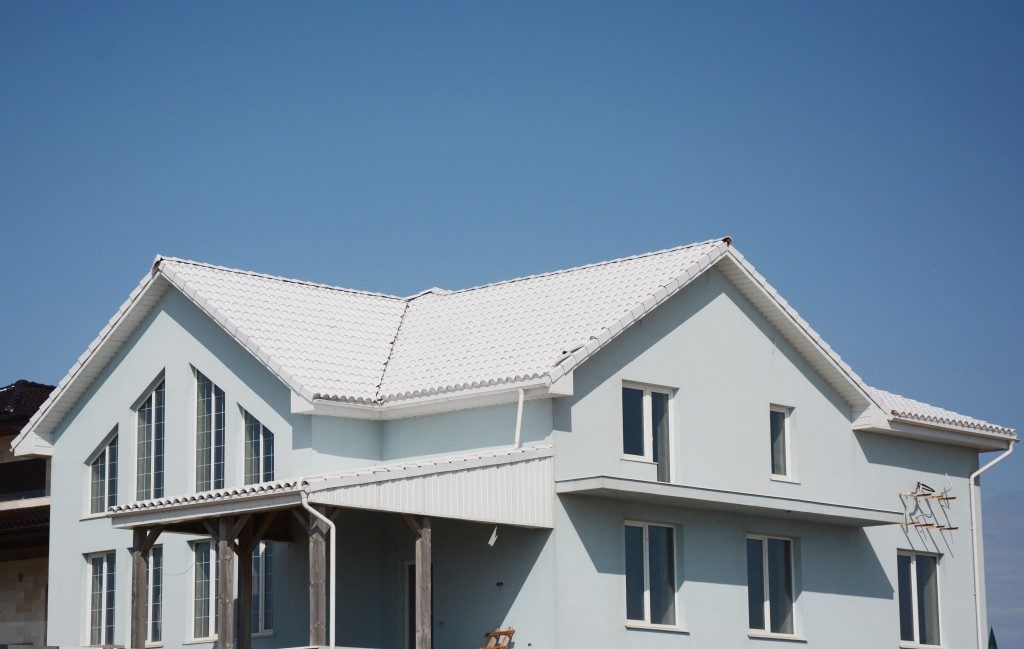Roofing is one of the most crucial decisions you’ll make while having your property built or renovated. Just like in all other parts of a property, we also have a number of options when it comes to roofing material and style.
Pitched roofs are seen in most homes, old and new, while flat roofs are more of a modern type that is also becoming a popular choice. Roofing companies in cities like Salt Lake City in Utah offer both of these roofing styles with different options for material, such as metal, shake, slate, and membrane. That said, let’s take a better look at what these styles and materials can do for your property.
Pitched Roof
Pitched roofs have a sloped structure, and are available in gable and hipped types, both of which are sloping in varying degrees. They could be harder to inspect and maintain because of the sloped structure hazard, but they perform excellently in water drainage.
This could be a better choice if your property is in an area where rains are prevalent. Its tough and stable structure made it a popular and classic choice for many homeowners, and it could fit in both traditional and modern style homes.
Gable roof is a popular type of pitched roof. It has a triangular shape with a steep slope on two sides, providing more space and ventilation for your attic or vaulted ceiling. It easily sheds snow and water, and constructing this roof is easier and affordable compared to other types.
Hipped roof, on the other hand, has slopes on all four sides. The sides are all equal in length, and they come together at the top, forming a ridge. It is sturdier than a gable roof, and they have a top-notch performance in high winds and snow.

Flat Roof
Flat roofs have no slope and are obtainable in a single-layer membrane, modified bitumen, and built-up types. They are the top choice for contemporary homes. Inspecting and cleaning a flat roof is relatively easier and safer, but overall, it’s a higher-maintenance type.
They don’t perform as excellently in heavy rains because the flat structure doesn’t allow much water drainage. To maximize the longevity of a flat roof, regular inspection is needed. Singe-layer membrane flat roofs are a common choice for commercial constructions.
They’re also known as elastomeric or plastomeric roof membrane. Synthetic rubber is the best material option for a single-layer membrane roof, because of its flexibility and elasticity, allowing it to withstand temperature changes and some impacts.
Modified bitumen flat roof is an older type. It contains polymer reinforced roof wear or cap sheets. Like single-layer membrane, it’s also elastic and flexible. A built-up flat roof is the oldest type. It is installed using several layers of a special type of asphalt-impregnated roofing felt that’s also embedded in bitumen. It has a wear surface of finely crushed stone granules, which protect the roof against UV rays and weather.
Roofing Materials
For pitched roofs, there are three top materials, namely metal, slate and shake. Metal roofing comes in aluminum, zinc, copper, and stainless steel versions. They are durable and highly resistant to harsh weather conditions.
Other than that, they’re long-lasting, recyclable, and you can even harvest the rainwater that flows down from it. Slate roofing has more aesthetic appeal and elegance. They’re also highly durable, fire-resistant, and recyclable. The price is hefty, making them perfectly suitable for posh homes.
Shake has been a go-to roofing choice for hundreds of years. They’re made of wood, and so they give off a rustic appeal. It has a fire-resistant variety, specifically the Class A fire-rated wood roofing.
With pitched and flat roofs explained, you just gained basic knowledge about your two choices of roofing style, along with their various types and materials. Consult your roof contractor about what would be the best for your property.

